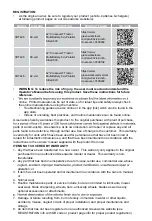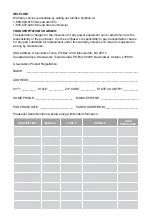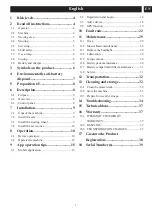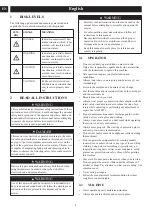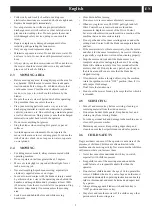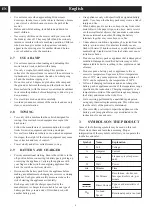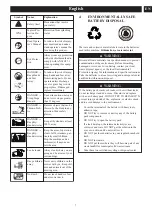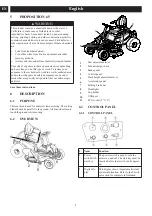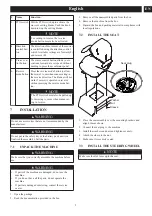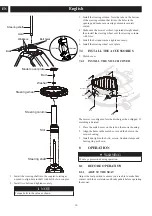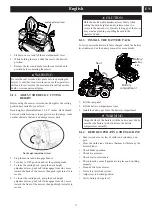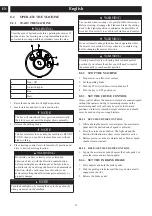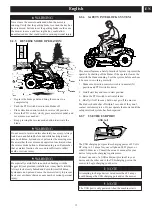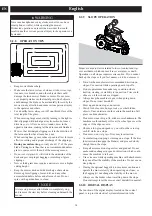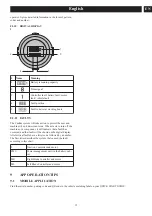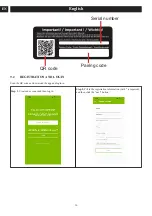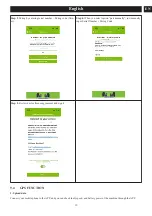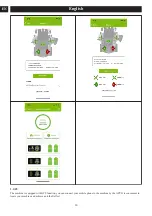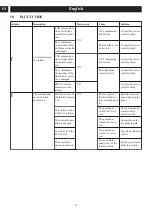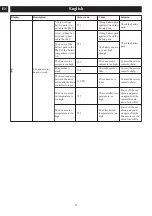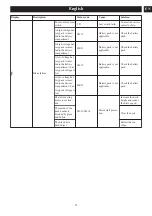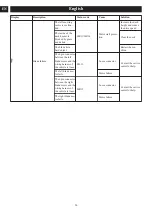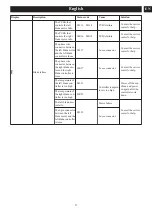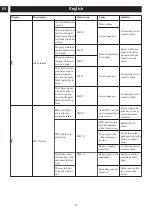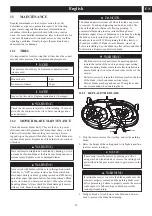
WARNING
Never use headphones or any electronic device, such as a
smart phone or tablet, while operating the mower.
Distracted operation can result in an accident that could
result in death or serious personal injury to the operator or a
bystander.
8.2.8
OPERATION TIPS
•
Keep mower blades sharp.
•
Make sure the lawn is clear of stones, sticks, wires, toys,
tree nuts, tree branches, and other objects that could
damage the lawn mower blades or motor. Do not mow
over property stakes or other metal posts. Such objects
could damage the blade or be accidentally thrown by the
mower in any direction and cause serious personal injury
to the operator and others.
•
For a healthy lawn, always cut off one-third or less of the
total length of the grass.
•
When mowing large areas, start by turning to the right so
that clippings will discharge away from shrubs, fences,
driveways, etc. After one or two rounds, mow in the
opposite direction, making left hand turns until finished.
•
Mow so that discharged clippings exit in the direction of
the lawn area that has already been cut.
•
When cutting heavy grass, reduce speed to allow for more
effective cutting and a proper discharge of the clippings.
•
During normal mowing,
cut only about 1.5" of the grass
blade. Cutting more than that is not recommended unless
grass is sparse or it is the end of the mowing season.
•
Do not cut wet grass. It will stick to the underside of the
deck and prevent proper bagging or mulching of grass
clippings.
•
New or thick grass may require a narrower cut or a higher
cutting height.
•
Keep the mower deck and side discharge chute clean.
Remove grass clippings, leaves, dirt, and any other
accumulated debris before and after each use. Do not
spray with a garden hose to clean.
NOTE
Always stop mower, allow blades to completely stop,
and remove the start key before cleaning underneath the
mower.
8.2.9
SLOPE OPERATION
Slopes are a major factor related to loss of control and tip-
over accidents, which can result in severe injury or death.
Operation on all slopes requires extra caution. If you cannot
back up the slope or if you feel uneasy on it, do not mow it.
•
Travel in the manufacturer recommended direction on
slopes. Use caution while operating near drop-offs.
•
Do not operate machine under any condition where
traction, steering, or stability is in question. Tires could
slide even if the wheels are stopped.
•
Always keep the machine in gear when going down
slopes. Do not coast downhill.
•
Mow up and down slopes, not across.
•
Watch for holes, ruts, bumps, rocks, or other hidden
objects. Uneven terrain could overturn the machine. Tall
grass can hide obstacles.
•
Do not mow near drop-offs, ditches or embankments. The
machine could suddenly roll over if a wheel goes over the
edge or if the edge caves in.
•
Choose a low ground speed so you will not have to stop
or shift while on a slope.
•
Do not mow on wet grass. Tires may lose traction.
•
Avoid starting, stopping, or turning on a slope. If the tires
lose traction, disengage the blade(s) and proceed slowly
straight down the slope.
•
Keep all movement on slopes slow and gradual. Do not
make sudden changes in speed or direction, which could
cause the machine to roll over.
•
Use extra care while operating machine with attachments;
they can affect the stability of the machine. Do not use on
steep slopes.
•
If using the optional bagger kit, use extreme caution and
operate the mower slowly when operating on slopes, as
the bagging kit can change the stability of the mower.
•
Always use the brakes when travelling down the slope.
Do not attempt to let the mower coast downhill in neutral.
8.2.10 DIGITAL DISPLAY
The function of the digital display, located on the control
panel, is to provide electrical system information to the
14
English
EN


